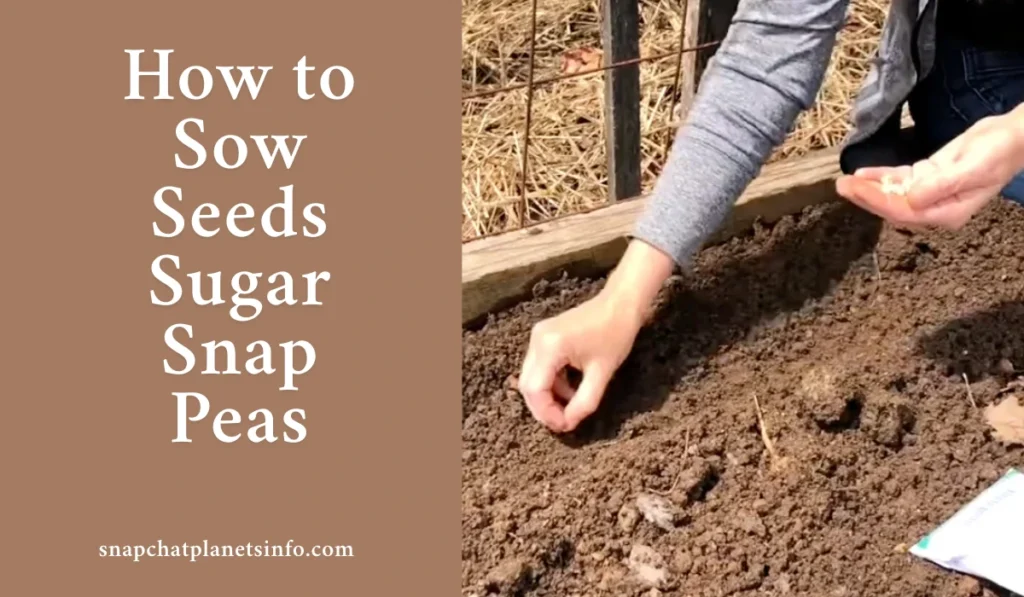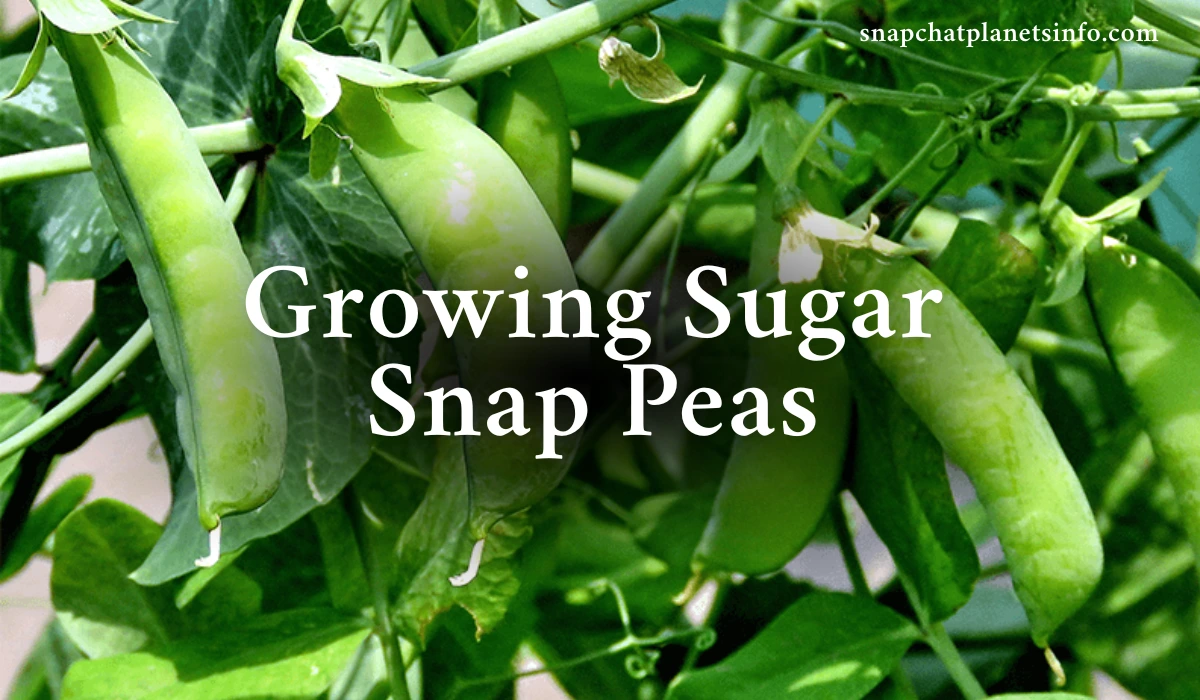Growing sugar snap peas offers fresh, crisp pods straight from your garden to your plate. These vines reward you with sweet, edible pods you can enjoy raw or cooked. Growing sugar snap peas gives you an early-season crop that brightens salads and snacks with natural flavor.
This cool-season crop thrives in mild temperatures and tolerates light frost. Vines climb trellises or stakes, saving space and adding lush greenery. You will find planting, caring, and harvesting snap peas both simple and satisfying.
Why Grow Sugar Snap Peas?
Growing sugar snap peas adds fresh, crisp flavor to your meals and garden. Homegrown pods taste sweeter than store-bought ones. These vining plants thrive in cool weather and yield early harvests.
You can eat pods raw, cooked, or pickled for variety. You will find peas straight from your yard a healthy snack. Growing snap peas saves money and boosts garden appeal.
These peas fix nitrogen and enrich soil for future crops. A small trellis or container support makes vines climb upward. Consistent care of water and sun leads to steady growth.
Harvest pods when they snap crisply for peak taste. Picking every two days keeps plants productive and sweet. Try growing snap peas to enjoy a community garden.
Choosing the Right Variety
Varieties differ in height, flavor, and disease resistance.
- Sugar Ann is dwarf and self-supporting.
- Super Sugar Snap offers long, extra-sweet pods.
- Cascadia resists common pea diseases.
Select the type that fits your space and taste when growing sugar snap peas.
Read more: How to pin someone on snap
Preparing Your Soil
Sugar snap peas thrive in loose, well-drained soil rich in organic matter. In fall, turn in compost or well-rotted manure. Aim for a pH of 6.0–7.5. This preparation is key to growing snap peas successfully.
When to Plant
Timing ensures vigorous growth and abundant pods.
- Spring sowing: Plant 4–6 weeks before last frost.
- Fall sowing: Plant 8–10 weeks before first frost.
Cool soil (45–50°F) speeds up germination. Proper timing boosts growing sugar snap peas.
How to Sow Seeds

Direct sowing is simple and effective. Till soil to 6 inches deep and firm the seedbed. Plant seeds 1–2 inches deep and 2 inches apart in rows 18 inches apart. Water lightly after planting. These steps set the stage for growing sugar snap peas.
Providing Support
Most snap pea varieties climb by wrapping tendrils around supports. Install a trellis, netting, or bamboo stakes at planting time. Proper support keeps vines off the ground and maximizes light exposure for growing sugar snap peas.
Watering and Mulching
Keep soil evenly moist, but avoid waterlogging. Water at the base to prevent leaf wetness and disease. Apply mulch around plants to lock in moisture and suppress weeds. Consistent care is vital for growing sugar snap peas.
Feeding Your Peas
Sugar snap peas fix nitrogen from the air, needing little extra fertilizer. If plants look yellow or stunted, side-dress with compost or a balanced 5-10-10 fertilizer. Light feeding supports healthy vines when growing sugar snap peas.
Managing Pests and Diseases
Common issues include aphids, slugs, and fusarium wilt.
- Spray aphids off with a strong water jet.
- Use slug traps or diatomaceous earth for slugs.
- Rotate crops yearly to reduce soil-borne diseases.
Vigilant care protects your effort in growing sugar snap peas.
Harvesting for Best Flavor
Pods are ready 60–70 days after planting. Harvest when pods are plump and snap crisply. Pick every 1–2 days to encourage more blooms. Regular picking extends your season of growing snap peas.
Saving Seeds for Next Year
Allow select pods to mature and dry on the vine. Shell dried pods to collect seeds. Dry seeds on a tray for a few days, then store in a cool, dark place. Seed saving makes growing snap peas a sustainable cycle.
Companion Planting Tips
Plant snap peas near carrots, lettuce, or radishes. These companions use different soil levels and deter pests. Avoid onions, garlic, and potatoes, which inhibit pea growth. Smart pairings enhance growing snap peas.
Extending Your Harvest
Sow successive plantings every two weeks in spring. Choose quick-maturing varieties for fall. Staggered sowing keeps your supply fresh and plentiful when growing sugar snap peas.
Read more: How to increase snap score
Culinary and Nutritional Benefits
Sugar snap peas offer fiber, vitamin C, and plant protein. Eat raw as a snack or cook briefly to retain crunch. Pickle whole pods for later use. Enjoying fresh pods highlights the rewards of growing sugar snap peas.
| Stage | Action | Benefit |
|---|---|---|
| Soil Prep | Add compost, adjust pH to 6.0–7.5 | Nutrient-rich growing medium |
| Planting | Sow seeds 1–2″ deep, 2″ apart, 18″ rows | Healthy, well-spaced plants |
| Support Setup | Install trellis or stakes | Upright vines, easy picking |
| Care | Water evenly, mulch, feed lightly | Consistent growth and yield |
| Pest & Disease | Monitor, rotate crops, address issues | Reduced damage and loss |
| Harvest | Pick every 1–2 days when pods are crisp | Extended fresh harvest period |
Frequently Asked Questions
How deep should I plant sugar snap pea seeds?
Plant seeds 1–2 inches deep to protect them and promote strong roots.
Can sugar snap peas tolerate frost?
Yes. Once sprouted, they handle light frost and cool temps well.
What spacing do snap pea rows need?
Space rows 18 inches apart to allow air flow and ease of harvest.
Do I need to fertilize sugar snap peas?
They fix nitrogen, but may benefit from a light side-dressing of compost.
Conclusion
Growing sugar snap peas rewards you with fresh, crunchy pods all season long. These plants thrive in cool weather and fit small or large gardens. By choosing the right variety and preparing soil well, you set your crop up for success.
Providing supports, consistent watering, and light feeding keeps plants healthy. Regular harvesting and monitoring for pests ensure you get the best taste. Saving seeds and companion planting make your garden more sustainable and diverse.
Remember to rotate crops yearly to reduce disease risk and boost yields. With these steps, you can enjoy the joy of growing sugar snap peas. Happy planting and may your harvest be sweet and plentiful. Share success and savor each crunchy bite in true celebration.
